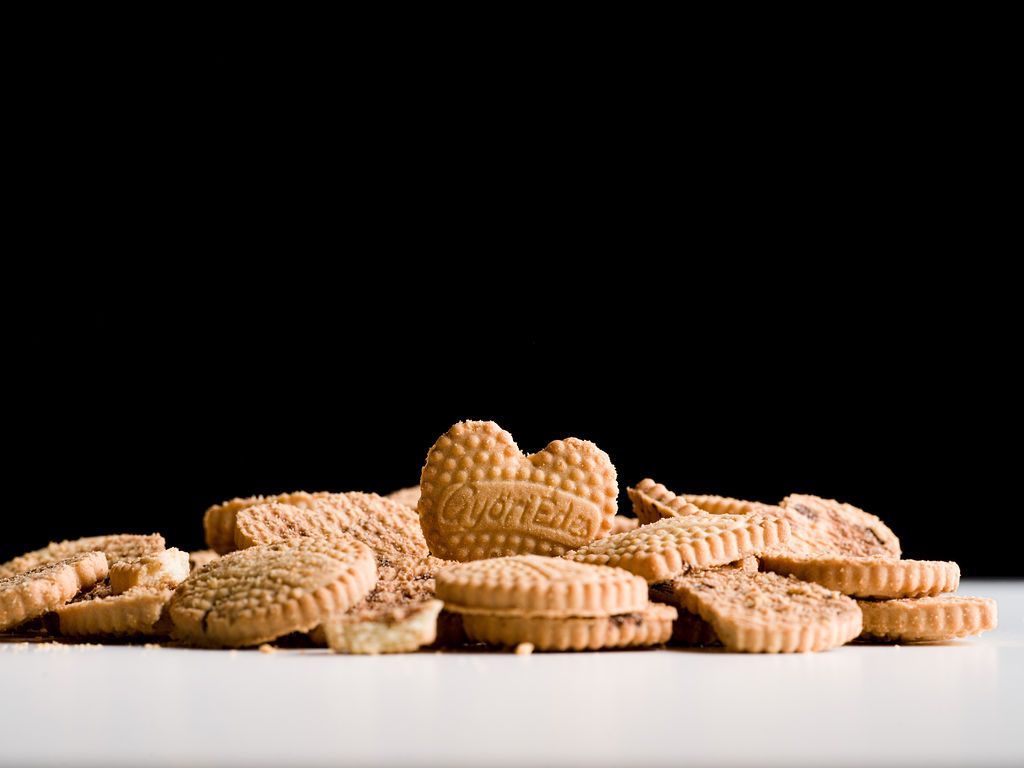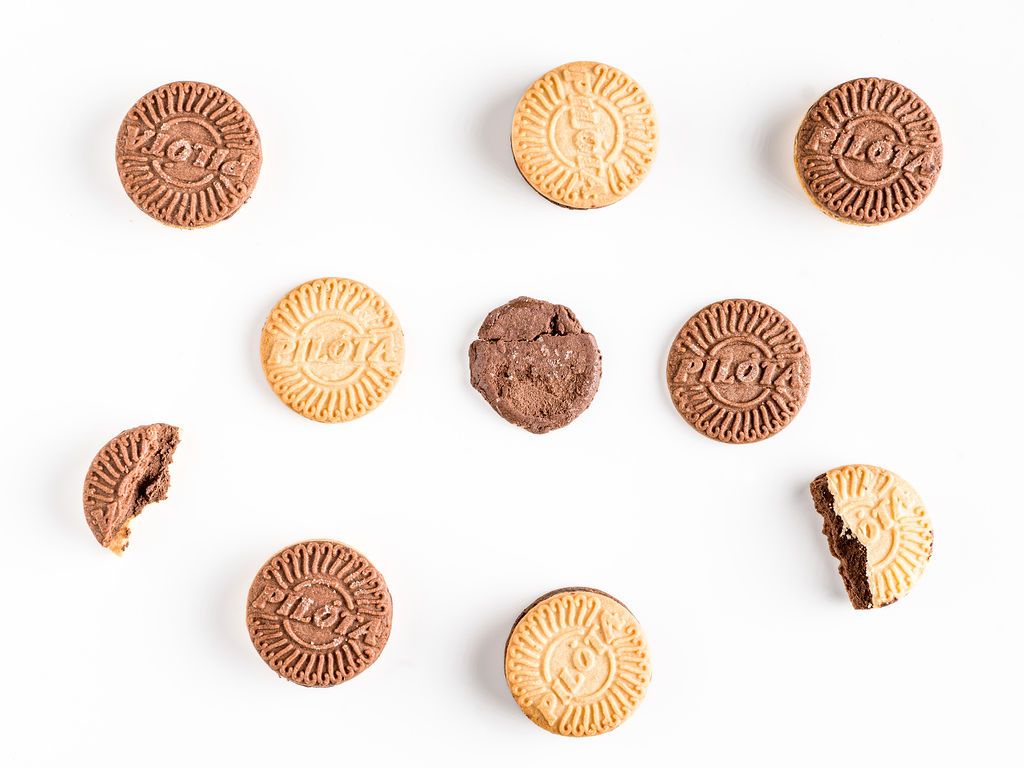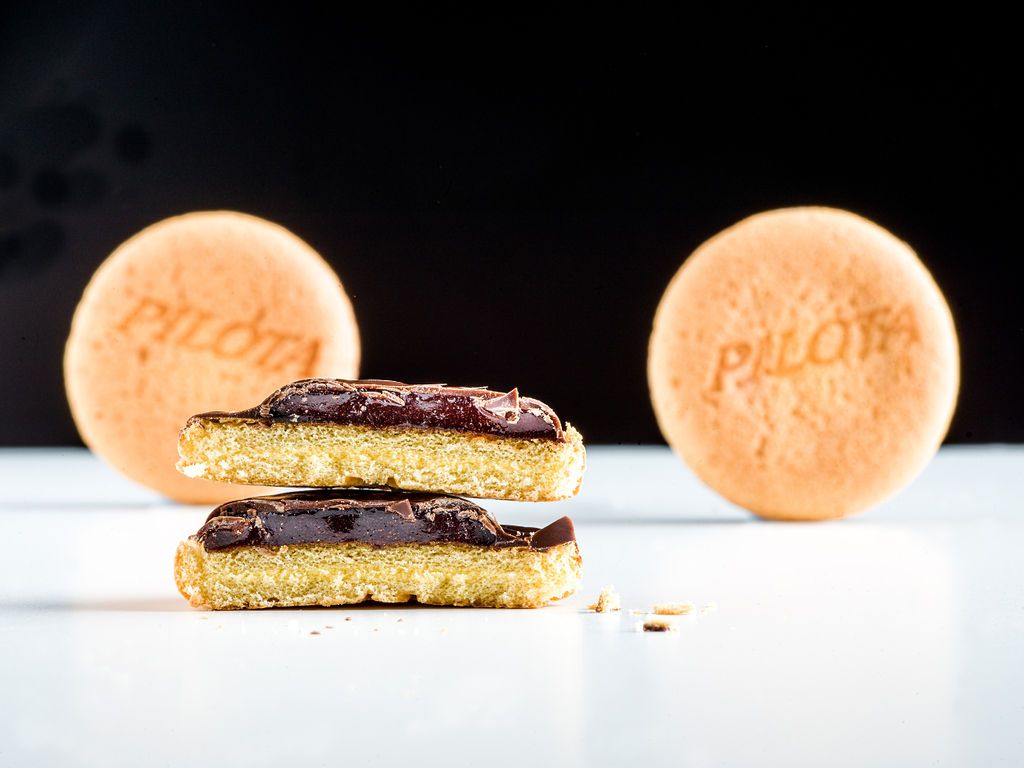Childhood can have many flavors. Some have fond memories of cotton candy, others of Dunakavics or Zizi. But there’s one universal sweet snack that everyone across the planet knows and which, for one reason or another, is a firm favorite regardless of age. It’s no different in Hungary—we’re talking about biscuits. Let’s open a bag together in the new episode of Büfé!
I was born in the ’90s, and although the market has changed a lot since then, there are still products that I loved as a child and are still available today. There were a few jars in our kitchen cupboard with cereal, muesli and plain biscuits hiding in them. We never really liked the latter, but we always kept some at home for emergencies, especially if any of us caught a virus for which diet was the cure. Much closer to our hearts (and stomachs) were the sweet, crumbly biscuits that never made it to the jar: my mum would hide them in the pantry or on top of the fridge, but we always found them and it wasn’t a rare thing for my brother and me to eat the whole bag at once. Besides the original Győri Édes, the coconut one was a big favorite, and on even more hedonistic days, the Pilóta pretzel and the square box of Mese biscuits also moved into the cupboard when autumn came. By the time I was in high school, I was packing Jó reggelt! biscuits for choir practice and school (strictly the hazelnut ones, I never understood the dried fruit ones), and then I became a fan of Zabfalatok. It’s a more nuanced question with today’s mind and taste buds, especially since the products have changed somewhat and my diet has changed, but I still get a pleasant feeling of nostalgia when I smell one. Of course, people try to make homemade versions, traditional and free, but somehow it never turns out exactly like that.

But since when did mankind start munching on biscuits? Let’s look at some etymology: the English language distinguishes two words: biscuit and cookie. The origin of biscuit is the French bescuit, which means “twice-baked”. In the Middle Ages, bakers used to bake a thin pastry and then put it back in the oven to dry. A similar unleavened flatbread made from cereal flour was eaten in ancient Egypt, but remained popular later because the dry, hard flatbreads could be kept for practically any length of time, making them a perfect food for military expeditions and sea voyages. In the meantime, softer versions appeared, mainly made from leftover bread dough and enriched with spices (hence the term gingerbread). As sugar production became widespread and developed on a large scale from the 17th century onwards, biscuits became sweeter and more cake-like, and the soft cookie appeared, enriched with chocolate, dried fruit and oilseeds. (It is the texture that distinguishes it from biscuits: the raw dough is soft and spreads out when baked, while biscuits are rolled out and cut into shapes.) Picking up on the previous thought, the Hungarian keksz may have its origins in the German keks, a transcription of the English cakes. The whole world went crazy for the different recipes, so every continent has found its own favorite. In Britain, for example, it is a national tradition to have biscuits and tea together, but the Australasian ANZAC oat biscuit (named after the Australian-New Zealand army) is also world-famous.

Hungary’s first biscuit factory opened in 1880 in Győrsziget. Hermann Back converted his own steam mill, and so the Magyar-Angol Biscuit Gyár Részvénytársaság (Hungarian-British Biscuit Factory Limited Company) was launched. The company operated until 1894, when the Bavarian-born businessman Lajos Koestlin took over and continued production at the turn of the century, with the help of capitalist Gusztáv Heller. They produced biscuits, rusks, wafers and gingerbread, and 13 years later, they employed 1,000 people and produced on an industrial scale. The first product was the Albert biscuit, named after Archduke Albert (since the technology and machinery came from England), and the original recipe dates back to the Monarchy. Later on, even the Great War didn’t mean a pause, as extra supplies were needed for the army: the waffli, the zwieback, the military biscuits and then the saccharin appeared in the product range, along with other sweets. Unfortunately, their financial situation became worse during the crisis, so in 1945 they leased the company to the Pesti Magyar Kereskedelmi Bank Rt. and the Leipziger Vilmos Szesz és Cukorgyár Rt. (Leipziger Vilmos Spirits and Sugar Factory Ltd.), and in ’47 they were nationalized. In 1950, a new chapter was reached: the company was registered as Győri Keksz- és Ostyagyár Nemzeti Vállalat (Győri Biscuit and Wafer Factory National Enterprise) and István Fürst took over as director of the new company. In the 1960s, the Economic Committee centralized as many factories as possible, so this factory became the number 4 unit of the Magyar Édesipar (Hungarian confectionery industry). 20 years later, as a dynamically developing factory, it managed its privatization itself and was taken over by the British United Biscuits, and in ’91 it took the name Győri Keksz Ltd. Later, Danone owned the factory for a while, and then Kraft Foods. The factory remained in this location until 2009, and the company stayed in the country for another 10 years. The Mondelez group took over the ownership and outsourced the production so that today there is little to remind us of the last century.

However, this has not made any difference to the popularity of the products. Besides the Albert biscuit, the portfolio has expanded, for example, the Pilóta biscuit has reached phenomenal success. The idea sprang from the mind of the company’s leader at the time, József Telekesi: he was probably inspired by the biscuits found in the survival packs of World War II fighter pilots. (If you associate them with Oreo biscuits, you’re right: the American sandwich biscuit was launched in 1912, and that’s how it got into the army.) However, in the 1960s, they bought a new wrapping machine that produced bar-shaped packaging, which would have been difficult to put amorphous sponge cake discs into, so they switched to biscuits. However, the sponge cake version remained, which is very similar to the British Jaffa cakes, dating back to 1927. Likewise, in 1963, the Vaníliás karika (Vanilla Hoop) was born, which evokes the flavor of vanilla crescents. This was experimented by Emil Horváth using old machine parts found in the factory. One pack of Pilóta now comes with 9 pieces instead of the former 10, but larger packages are also available. There are heated debates about how to eat them—in one bite or in layers, separating the cream from the biscuit, but somehow this squabble also connects us.

In 1994, a new production line was launched with a capacity of 1000 kilos per hour. 12 types were produced, and in the case of the Pilóta, they were also trying fruit variants for a while, but those didn’t become popular. The bran biscuit, or Korpovit, has appeared, which aimed at people with a healthier lifestyle. Its origins lie in the American Graham biscuit, the “invention” of a pastor, Sylvester Graham—who in 1837 set up his own system of dietary rules, which encouraged his followers to go with a more modest, puritanical diet, and believed that eating whole-grain wheat products was also good for unclean thoughts. I don’t know whether Korpovit worked in this respect, but the fact is that many people liked it because of its saltier taste. At one time, Győri also made chocolate pretzels, which were chocolate-covered crumbly dough. I remember them as being delicious, but then suddenly they disappeared from the shelves (I haven’t found any information on why). Instead, another version, made by Detki, appeared.

Detki’s factory was built in 1982, in the same village where the well-known farmer Bálint (György Bálint) grew up. The first manager was Kálmán Koósa, who used his talent to make the plant flourish, which required using two old ovens of the Hungarian Confectionery Company, the land of the Detki Farmer’s co-operative in Halmajugra and the employees of the Heves County Baking Company. After the privatization, three families shared the ownership: Kálmán’s wife, Olga Pavlova, led the company from 1991 in harmony with the others. After purchasing their own oven, they started to produce their branded products, such as the famous plain biscuits. The next generation was represented by Péter Koósa, who took over Detki and developed a new corporate management system. The premises were extended to 3,500 square meters and capacity increased with a new oven, dipping machine, packaging machines and robot technology.

The product portfolio has become increasingly colorful. Their oldest and biggest idea was the launch of the minced biscuit, which gave a new purpose to imperfect biscuits that could not be sold and were removed from the production line, thus rewriting the world of Hungarian homemade cakes. (After all, where would we be today without biscuit rolls and Sport slices?). Also popular is the 1985-born Mese biscuit, reminiscent of the Belgian Speculoos, a shortbread with Christmas spices and honey in several variations. They have also entered the gluten and sugar-free market and even offer savory crackers. Their market position has grown in recent years and they now export abroad and are constantly striving to become more sustainable. And perhaps most importantly, they are still on Hungarian soil and in Hungarian hands.
Photos: László Sebestyén | Web | Facebook | Instagram
Source: Ipartörténet, 24.hu, Magyar Brands, Trade Magazin, English Heritage

Circular-plan wine castle from Foster + Partners

”This is Péter’s award, and I’ll take it to him” | Interview with architect Zsófia Csomay










